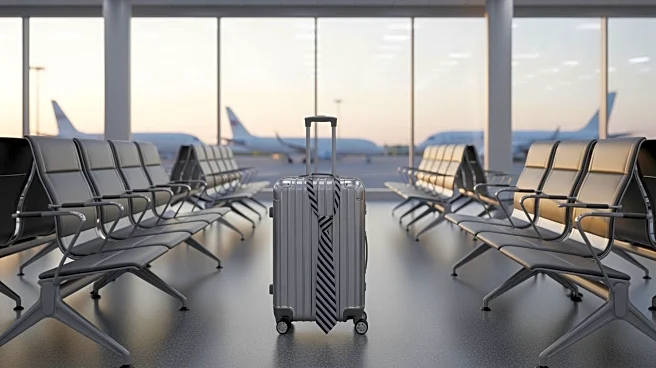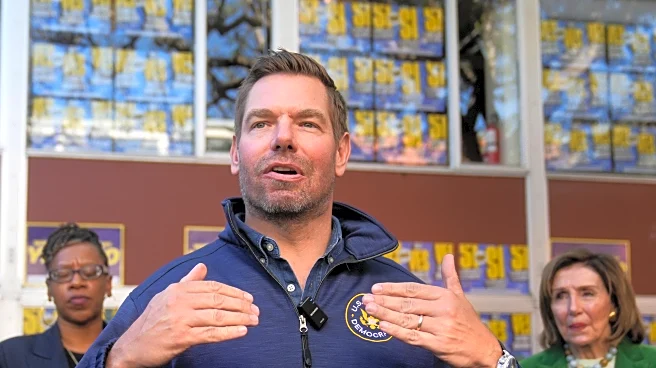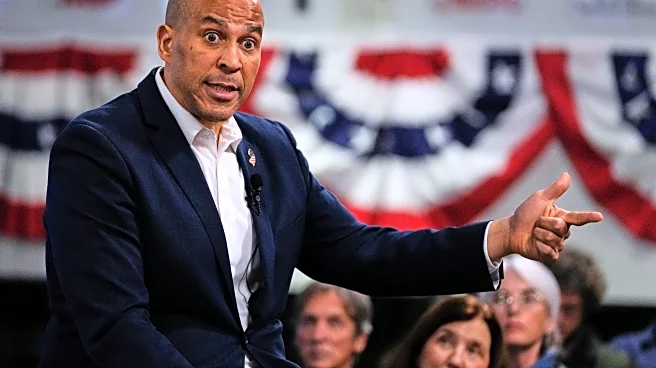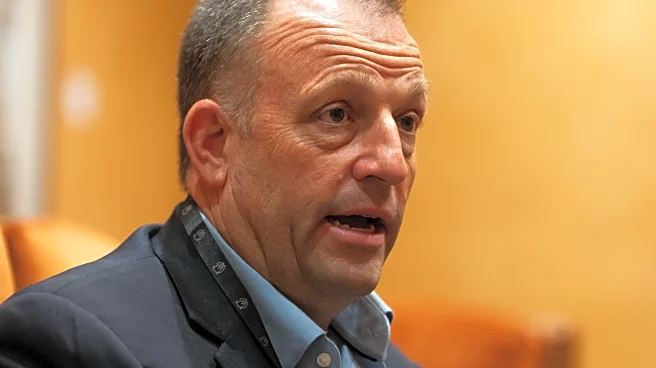What's Happening?
California Governor Gavin Newsom has publicly criticized Transportation Secretary Sean Duffy's proposal for a new dress code aimed at improving civility among air travelers. Duffy, who has a background
as a professional lumberjack, suggested that passengers should dress more smartly to foster a better atmosphere on flights. Newsom responded by posting a tweet featuring Health and Human Services Secretary Robert F Kennedy Jr walking barefoot down a plane aisle, accompanied by a dismayed emoji. This tweet is part of Newsom's ongoing campaign to mock President Trump's administration, using social media to highlight perceived shortcomings in their policies. Duffy's proposal, which he outlined at Newark International Airport, encourages passengers to dress respectfully and behave courteously, suggesting that better attire could lead to better behavior. However, Newsom's response highlights skepticism about the effectiveness of such measures, especially given the various challenges faced by air travelers, such as delays and cramped seating.
Why It's Important?
The debate over air travel civility touches on broader issues of passenger experience and airline policies. Duffy's proposal aims to address the growing concerns about unruly behavior on flights, which has been exacerbated by social media reports of incidents at airports and on planes. By focusing on dress codes, Duffy suggests that personal appearance can influence behavior, potentially reducing conflicts and improving the travel experience. However, Newsom's criticism underscores the complexity of air travel issues, suggesting that superficial changes may not address deeper systemic problems like flight delays and uncomfortable seating. This exchange reflects ongoing tensions between state and federal officials, particularly in the context of President Trump's administration, and highlights the role of social media in shaping public discourse.
What's Next?
As the debate continues, stakeholders in the airline industry may weigh in on the feasibility and impact of implementing dress codes for passengers. Airlines could consider adopting Duffy's suggestions, but they may also face resistance from passengers who prioritize comfort over appearance during travel. Additionally, Newsom's use of social media to critique federal policies may prompt further discussions about the role of public officials in influencing transportation norms. The ongoing dialogue could lead to broader discussions about improving air travel experiences, potentially involving policy changes or new initiatives aimed at enhancing passenger satisfaction.













